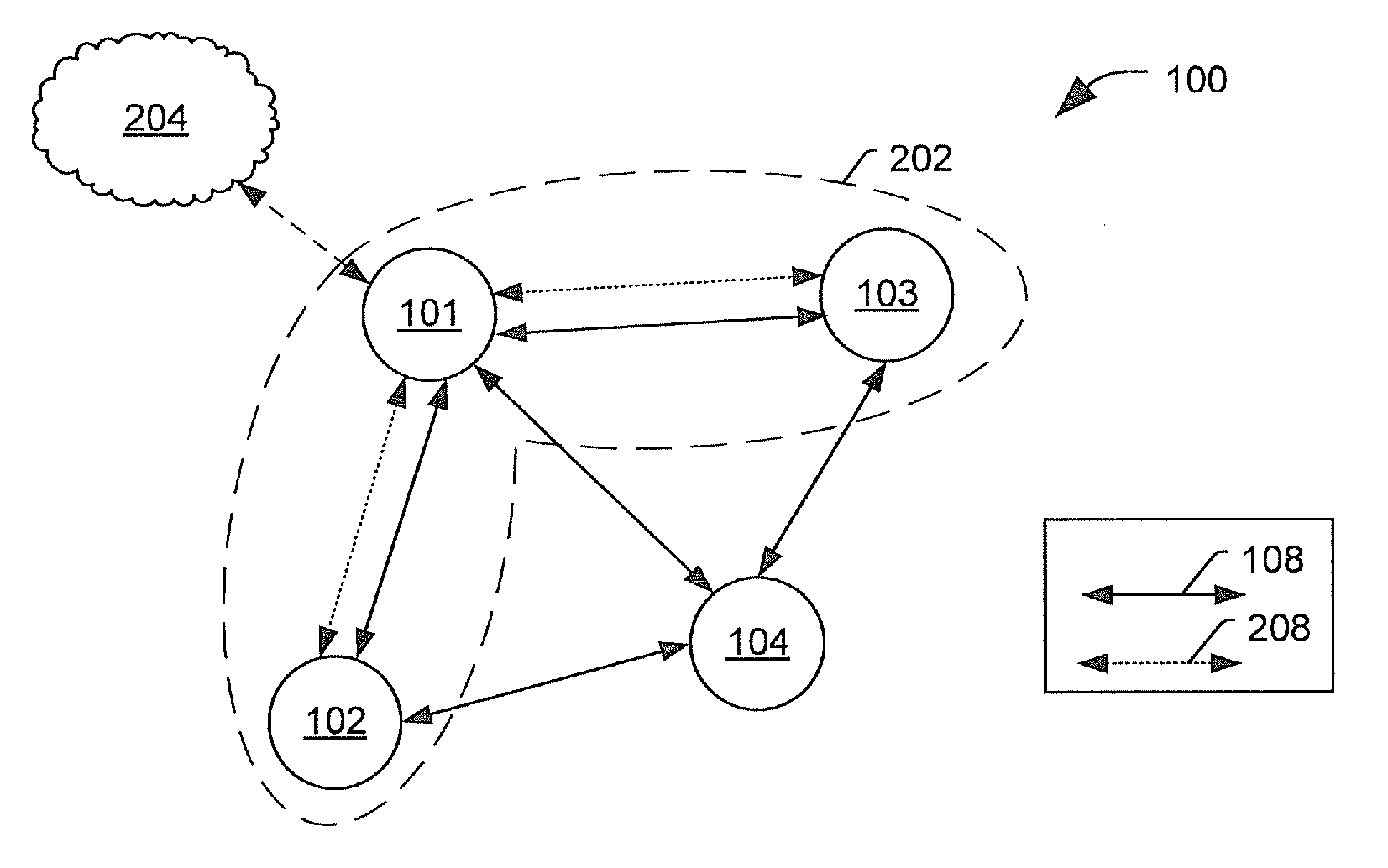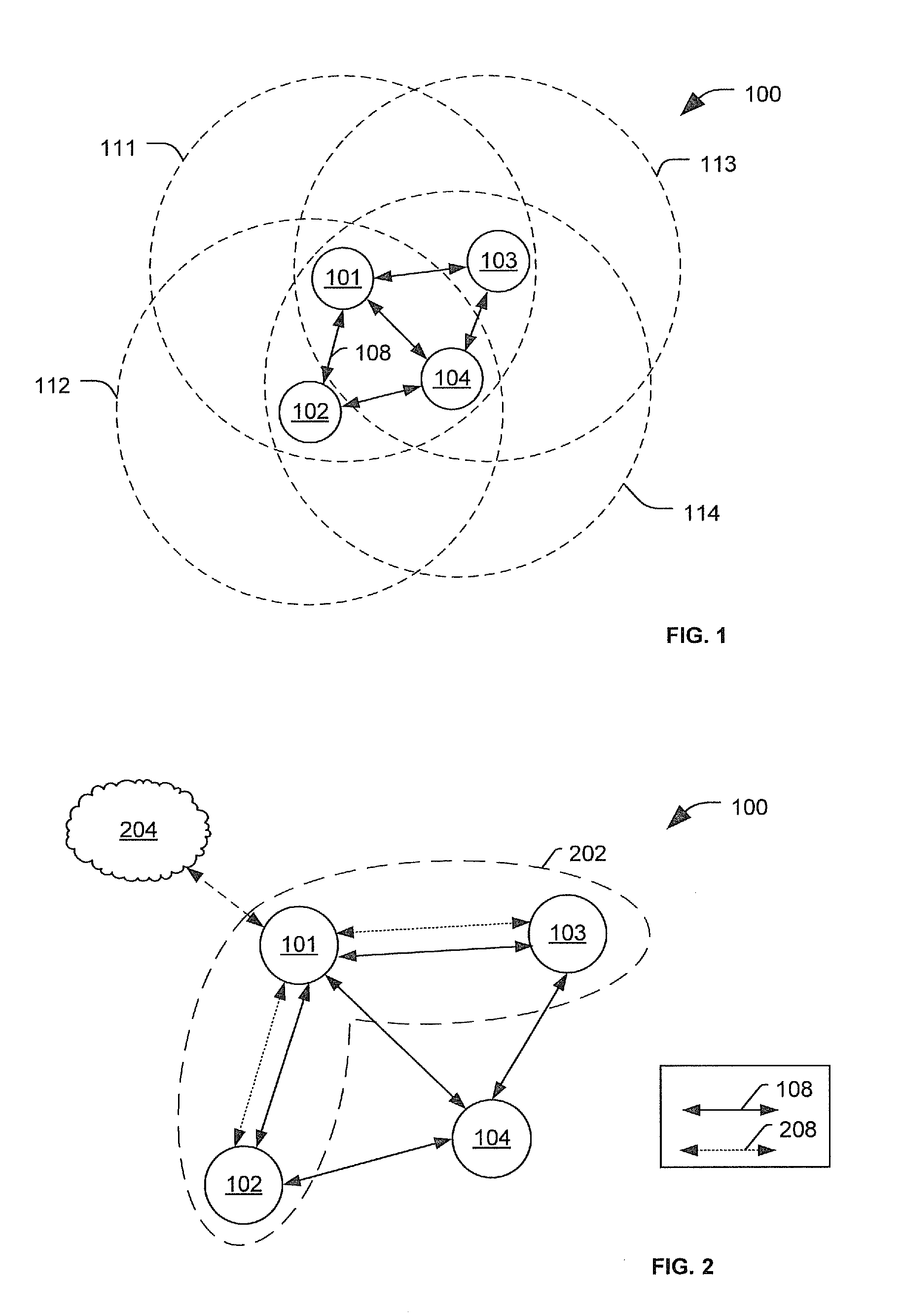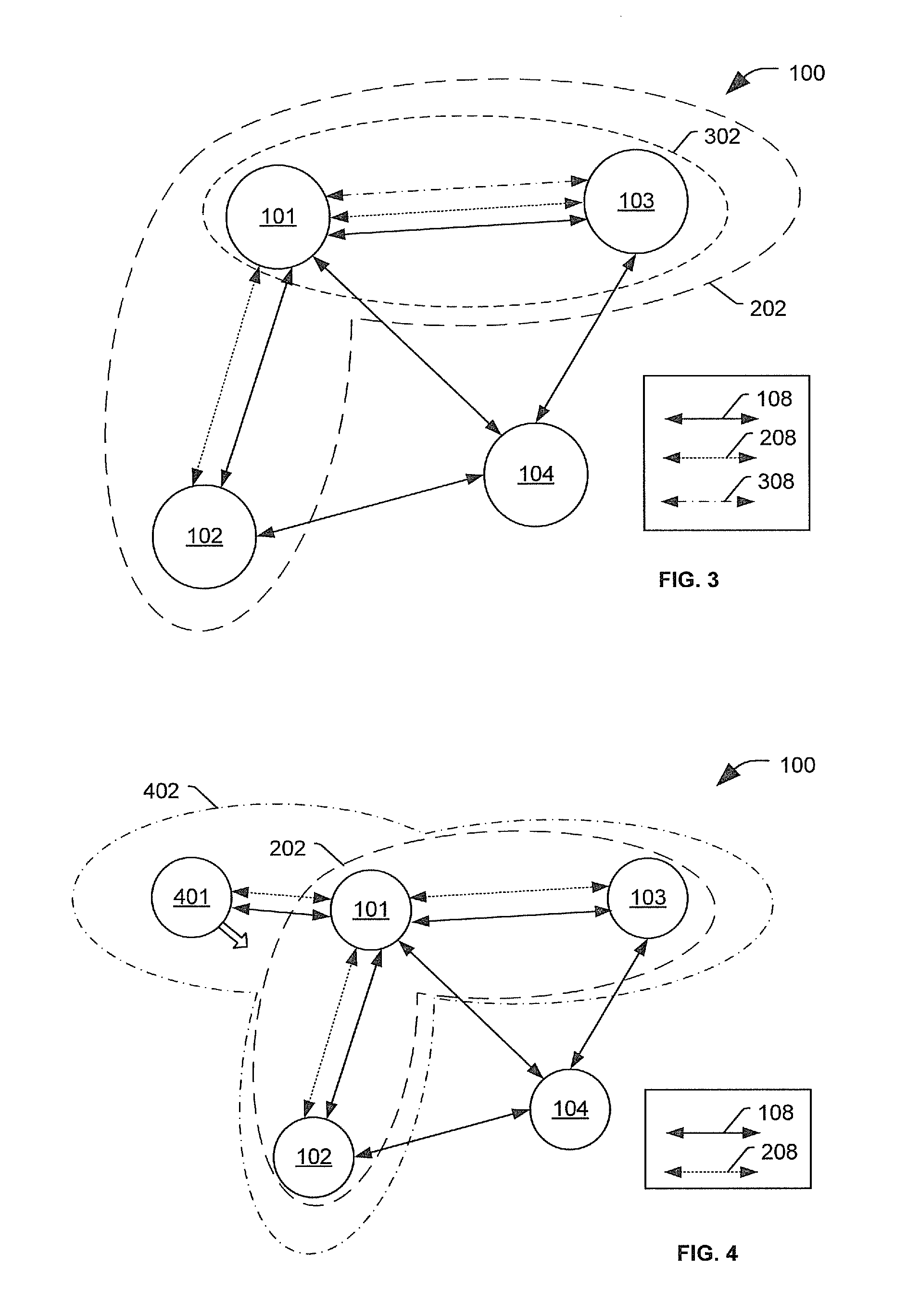Wireless network security
a wireless network and wireless technology, applied in the field of wireless network security, can solve the problems of ad hoc wireless networks being particularly vulnerable, unable to access network services, and being difficult to defend against wireless networks
- Summary
- Abstract
- Description
- Claims
- Application Information
AI Technical Summary
Benefits of technology
Problems solved by technology
Method used
Image
Examples
Embodiment Construction
[0020]In wireless networks (e.g., mobile ad hoc networks, sensor networks, wireless local area networks, vehicular ad hoc networks, etc.), network security can be a particular concern. In switched or wired networks only nodes at a perimeter of the network may be exposed to direct attack. However, in a wireless network, an attacker may be able to directly attack other nodes of the network, which may enable the attacker to gain access to the other nodes or to other portions of the network.
[0021]One way of addressing such concerns is to isolate a suspect node by refusing the suspect node access to network services in the network. However, simply refusing access to network service may have disadvantages. For example, refusing the suspect node access to network services may alert the suspect node that it has been detected. Alerting the suspicious node that it has been detected, may provide the suspicious node with information about detection mechanisms that are used on the network, which...
PUM
 Login to View More
Login to View More Abstract
Description
Claims
Application Information
 Login to View More
Login to View More - R&D
- Intellectual Property
- Life Sciences
- Materials
- Tech Scout
- Unparalleled Data Quality
- Higher Quality Content
- 60% Fewer Hallucinations
Browse by: Latest US Patents, China's latest patents, Technical Efficacy Thesaurus, Application Domain, Technology Topic, Popular Technical Reports.
© 2025 PatSnap. All rights reserved.Legal|Privacy policy|Modern Slavery Act Transparency Statement|Sitemap|About US| Contact US: help@patsnap.com



